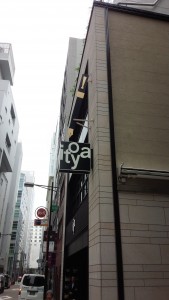When it comes to technology, Japan typically has the reputation of being several minutes into the future compared to the rest of the world. Tokyo has a modern, almost space age look. Everything is bright and polished. The trains run on time–much to the shock of people from England and anyone who’s ever suffered a ride on Amtrack–and the bullet trains look really cool. Everyone has a cellphone and is too cool to actually use it for making calls. Japan has the second (or third depending on the survey) fastest internet in the world.
For while, the several minutes into the future reputation may have been true, more or less, in a way, if you only stayed in Tokyo.
I arrived in Japan with that expectation but when I got to my first school, I immediately noticed the lack of computers. Hell, even in tiny Hayden, Colorado we’d been using computers at school in the early 80s and I’d written programs on my high school’s computers in Kansas. In Japan, though, only one teacher had a laptop computer–his personal one–and everyone else was using large word processors that looked like computers but were basically large typewriters with monitors and floppy drives. There was a room full of computers upstairs, but to my knowledge no one ever used them.
Eventually I got a computer and an ISP and started surfing the growing web. The problem was, Japan was my first encounter with paying for local calls. At the time a call across town in the daytime cost 10 yen (about a dime) a minute. That made using a dial up connection for an hour cost six dollars. It was a little cheaper at night, but not much. Also, at the time, to get a land line installed from Nippon Telephone and Telegraph (NTT) cost around a $1,000 per line. (If you were a business and needed five lines, you had to pay $5,000 dollars for them.) Then there was the wait as it is a universal rule that all servicemen can only arrive on Tuesday at 2:00 p.m. which actually means sometime on Friday.
As a result, the Japanese gravitated toward cellphones because you could get one for only a penny and it was working within an hour. When writers came to Japan, they saw high school girls with cellphones and were convinced the future had arrived in Japan.
One consequence of the spread of cellphones was that when the Japanese government began pushing for faster and faster broadband, including installing fiber-optic connections, not many Japanese were impressed. They didn’t need computers as they already had internet on their phones. They could even watch television on them. Protected industries such as banking and insurance were also slow to adopt computers–She Who Must Be Obeyed worked for one of the largest insurance companies in Japan and did most of her data entry and paperwork by hand. Teachers were too busy teaching other mandates to be interested in having a “teach this computer stuff” mandate added on.
The second consequence of Japan’s early cellphone adoption was an initial lack of interest in smart phones. The iPhone arrived in late 2008 but didn’t really catch on until 2010. After that, you slowly began to see more and more smartphones.
The final consequence has been a complete lack of interest in wifi leaving Japan with some of the worst wifi coverage in the developed world. More than one intrepid traveler has arrived in Japan and discovered they could only use their computers’ wifi in the hotel lobby, Starbucks or the parking lot of 7-11. If they had smartphones, they discovered the joys and expenses of global roaming.
Recently, though, Japan has begun to arrive back in the future as more and more stores and restaurants have begun to add free wifi as they discovered they can use it to pump advertising. Some of the cellphone companies have subscription wifi services that can be used all over the country. Also, the price of fiber optic broadband has fallen and is now competitive with ordinary ADSL. (This may mean an upgrade is in my future.)


